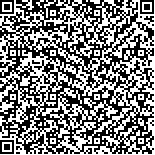| 本文已被:浏览 850次 下载 1943次 |

码上扫一扫! |
|
|
| 不同玉米品种籽粒耐破碎性差异及影响因素 |
|
刘佳媛1,2,刘倩倩1,陈祥1,2,邓宗林3,袁继超1,2,孔凡磊1,2*
|
|
1.四川农业大学 农学院, 成都 611130;2.四川农业大学 作物生理生态及栽培四川省重点实验室, 成都 611130;3.四川农业大学 资源学院, 成都 611130
|
|
| 摘要: |
| 为明确不同玉米品种机械收获时籽粒的耐破碎性差异和影响籽粒耐破碎性的因素,以13个玉米品种为材料,设置不同收获时间,对不同玉米品种籽粒的破碎率、含水率和硬度等指标的动态变化特征进行研究,分析籽粒破碎率与含水率和硬度的关系,采用积分法评价不同玉米品种籽粒的耐破碎性。结果表明:随收获时间的推迟,籽粒破碎率先快速降低后稍有升高,籽粒含水率逐渐降低,籽粒硬度逐渐增大,且玉米品种间差异显著。破碎率与籽粒含水率符合二次曲线关系,当籽粒含水率为19.70%时破碎率最低;破碎率与籽粒硬度极显著负相关,其中胚乳穿刺强度与破碎率的相关性最高,当籽粒胚乳穿刺强度为88.35 N时破碎率最低;籽粒硬度与含水率呈极显著的负相关关系。降低籽粒含水率进而提高其硬度是增强玉米籽粒的耐破碎能力和降低籽粒破碎率的关键。不同玉米品种籽粒的硬度和耐破碎能力存在显著差异,在含水率相近的条件下,耐破碎能力强的玉米品种均具有较高的籽粒硬度。籽粒硬度指标中的胚乳穿刺强度可作为鉴选宜机械粒收玉米品种的重要指标;参试的所有硬粒型玉米品种、半马齿型‘仲玉3号’、半硬粒型 ‘辽禾308’、‘先玉1171’和马齿型‘正红6号’的籽粒耐破碎能力强,可作为适宜机械粒收的品种。 |
| 关键词: 玉米 机械粒收 破碎率 籽粒硬度 籽粒含水率 耐破碎性 |
| DOI:10.11841/j.issn.1007-4333.2021.12.20 |
| 分类号: |
| 基金项目:国家重点研发计划(2017YFD0301704,2018YFD0301206,2016YFD0300307);四川省玉米创新团队建设项目(SCCXTD-2020-02) |
|
| Diversity and influencing factors of kernel breakage tolerance of different maize cultivars |
|
LIU Jiayuan1,2,LIU Qianqian1,CHEN Xiang1,2,DENG Zonglin3,YUAN Jichao1,2,KONG Fanlei1,2*
|
|
1.College of Agronomy, Sichuan Agricultural University, Chengdu 611130, China;2.Crop Ecophysiology and Cultivation Key Laboratory of Sichuan Province, Sichuan Agricultural University, Chengdu 611130, China;3.College of Resources, Sichuan Agricultural University, Chengdu 611130, China
|
| Abstract: |
| In order to clarify the differences of maize grain breakage resistance of different maize cultivers during mechanical grain harvesting and their influencing factors, 13 maize cultivars were taken as materials to study the dynamic change characteristics of grain broken rate, moisture content, and hardness of different maize cultivars in different harvest dates, and analyze the relationship between grain broken rate and moisture content and hardness. The integral method was used to evaluate the resistance of different maize varieties to kernel breakage. The results showed that: With the postponement of harvest time, the breakage rate of grain decreased rapidly and then increased slightly. The moisture content of grains gradually decreased, and the hardness of grains gradually increased. There were significant differences between different maize varieties. The relationship between the breakage rate and the moisture content of grain conformed to the quadratic curve, and the broken rate was the lowest when the moisture content of grain was 19. 70%. There was a significant negative correlation between the breakage rate and the grain hardness, and the endosperm puncture strength had the highest correlation with the breakage rate. When the endosperm puncture strength was 88. 35 N, the broken rate was the lowest. There was a significant negative correlation between grain hardness and moisture content. In conclusion, reducing the moisture content of grains and improving the mechanical strength of the grains are the key to enhancing the resistance to grain breakage and reducing the breakage rate of maize. There were significant differences in kernel hardness and breakage resistance of different maize varieties. Under the conditions of similar moisture content, maize varieties with strong breakage resistance have higher kernel hardness. The endosperm penetration strength of the grain hardness index can be used as an important index for selecting suitable mechanical grain harvesting maize cultivars. All the flint corn varieties tested, semi-dent corn ‘Zhongyu 3', semi-flint corn ‘Liaohe 308', ‘Xianyu 1171' and dent corn ‘Zhenghong 6' have strong grain breakage resistance and can be used as suitable for mechanical grain harvesting. |
| Key words: maize mechanical grain harvesting grain broken rate kernel hardness grain moisture content breakage tolerance |